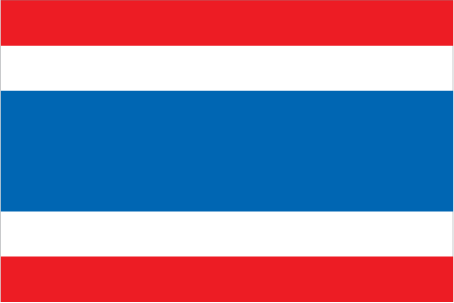To help inspire or plan your trip to Thailand, some of its major attractions
for travellers are shown below, including some of the best natural, historical, cultural and adventure sites in the country.
These include all of UNESCO World Heritage Sites for Thailand which represent the best
of the world's cultural and natural heritage.
Click on the icons below to focus on specific types of features
(click again to return to all).
|
|
|
|
|
|
|
|
|
|
|
|
 |
|---|---|---|---|---|---|---|---|---|---|---|---|
| Natural | History | Wildlife | Trekking | Cities | Religious Monument | Boat Journey | Rail Journey | Diving | Cultural | Adrenaline | UNESCO WHS |
Northern Thailand - Historical attractions
| Bangkok | |
|---|---|
Bangkok is Thailand's huge and bustling capital, a chaotic and cosmopolitan city with many attractions. The most spectacular of these is the opulent and magnificent Grand Palace, reached on one of Bangkok's renowned waterways or klongs. Built in the late 18th century when Thailand was re-emerging from Burmese oppression, the complex is a vast collection of palaces, golden stupas, ornately decorative statues and wats, of which Wat Phra Kaew (Temple of the Emerald Buddha) is the most impressive. Wat Po, home of the famous 46 metre long gold-plated Reclining Buddha, is another must-see. Elsewhere in the city, Jim Thompson's House is a museum containing superb examples of Thai art and furniture, collected by the former CIA officer and silk magnate. Shops and markets such as Chatuchak Market sell a huge range of Thai goods while at night Bangkok comes alive with a huge variety of restaurants, bars and nightclubs. | |
| Kanchanaburi | |
|---|---|
The Kanchanaburi Province west of Bangkok is famous for being the site of the infamous 'Death Railway' and the 'Bridge on the River Kwai'. During the Second World War, the Japanese built a railway to link Thailand with Burma to carry supplies for their expanding empire - between June 1942 and October 1943 16,000 Allied prisoners of war and an estimated 75,000 Asian forced labourers died in its construction. The Kanchanaburi War Cemetery and the JEATH War Museum commemorate those who died. You can take the train along part of the original railway and at 'Hellfire Pass' visit a memorial museum which chronicles the building of the railway. | |
| Ayutthaya | |
|---|---|
Ayutthaya was founded around 1350 and became the second capital of the Kingdom of Siam after Sukhothai. It soon became one of the largest and wealthiest cities in the East, capital of a kingdom which encompassed large parts of present day Burma, Laos and Cambodia. Ayutthaya developed its own distinctive artistic style, influenced by other cultures with which it traded, before it was destroyed by a Burmese invasion in the 18th century. Remnants of its golden period include the Royal Palace, Wat Mahathat, Wang Luang and numerous gigantic Buddha statues and prangs (reliquary towers). UNESCO World Heritage Site: Historic City of Ayutthaya | |
| Sukhothai | |
|---|---|
Sukhothai was the first capital of the Kingdom of Siam in the 13th and 14th centuries, until it was superseded by Ayutthaya, deserted and only rediscovered as a 'lost city' in the 19th century. With 21 historical sites within the city walls and a further 70 outside, Sukhothai is an important and fascinating site. Monuments of note include Mahathat Wat, a monastery with a royal palace and cemetery and the graceful Sra Si Wat with its two stupas. The nearby town of Si Satchanm contains the impressive Wat Chang Lom, decorated with 39 standing elephants. UNESCO World Heritage Site: Historic Town of Sukhothai and Associated Historic Towns | |
| Ban Chiang Archaeological Site | |
|---|---|
Ban Chiang is considered the most important prehistoric settlement so far discovered in South-East Asia. Located in eastern Thailand, the site depicts a culture dating back to the 5th millennium BC with evidence for farming, metal production, pottery manufacture and house construction. UNESCO World Heritage Site: Ban Chiang Archaeological Site | |


